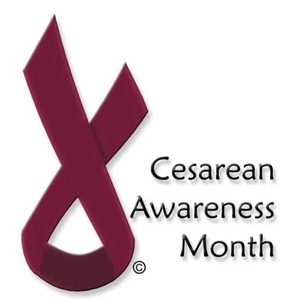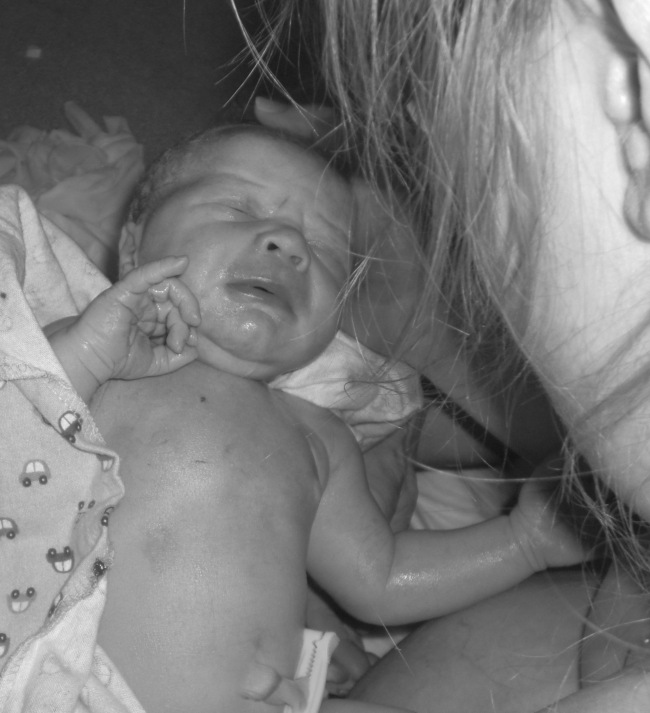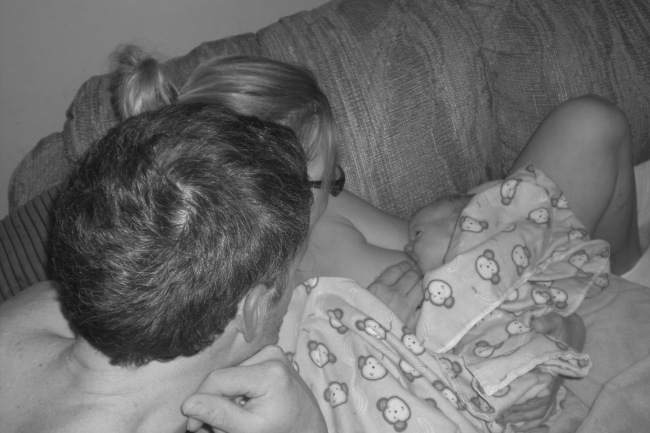by Erin Stertz-Follett, CLD, LCCE, HBCE
My journey into birth began 10 years ago after the birth of my first nephew, Micah. I wouldn’t fully embrace birth as my calling until many years later, after the birth of my own two girls and the ‘birth’ of the passion inside me to bring services of meaning to pregnant women and their families.
I will never forget that moment. After an induction that lasted more than 24 hours, and “arrest of descent” of the baby during pushing, my sister was told that she would need a cesarean section. I watched as her face turned from determination, to disappointment, to resignation, and to sorrow. As my mom and I left the room while they began the surgical prep, I said to Mom, “That’s not what we wanted.” With tears trickling down her cheeks, she shook her head, “No.” The grief for what Sarah so badly wanted – a vaginal birth with minimal interventions – was palpable.
A few years later, as I was pregnant with my first child and wanting to learn as much as I could to avoid my own surgical birth, Sarah invited me to an ICAN (International Cesarean Awareness Network) meeting. At that time, the group was small and had just begun reforming here in the Twin Cities. I happened to attend on a night when a wise midwife named Gail Tully was on hand to provide information and practice in ‘optimal fetal positioning’ for birth. I didn’t know anything about birth halls or Rebozos, or the side-lying release. I just knew that it felt so good (and kind of funny!) as I was used as the ‘pregnant model’ for Rebozo belly sifting.
Two babies later, both of which included my sister’s attendance and support, I began the true path to birth work as a Lamaze Certified Childbirth Educator, doula, and HypnoBirthing Certified Educator. Again, my journey was largely inspired not only by Sarah’s first birth, but also by her successful HBAC (home birth after cesarean) her second time around.
To offer full disclosure, I dreaded as a doula the first time I would need to step into the surgical suite and witness a mama experience a cesarean birth. In some small way, I was traumatized by my sister’s experience. Now with several under my belt, I can say that my perspective has changed. Yes, it is still difficult. But, with my doula hat on, I enter the experience with an open heart and an open mind, with nothing but how I can best support that mama in that moment as my focus. It is at that time that we turn our trust over to the trained surgeon whose job now is to safely bring the baby forth from the mother’s womb. I offer a grounding hand on the forehead, an explanation of what to expect and what is happening, sounds and smells that calm the mother, words of reassurance to the partner, and pictures if mama desires.

I have seen mothers who view their surgical births in many different ways: From full-on acceptance (even requesting one at the end of a long, stalled labor); to complete devastation (offering my doula hands to wipe away tears); to somewhere in the middle (perhaps with resignation and a resolve to process the experience later). I have seen cesareans that are completely medically necessary, and those that fall in a grey area.
Look, the cesarean rate in this country (32.8%) is too high. There’s no way around that. We can do better. For women, for babies, and for their families. It may feel daunting to tackle this subject on a grander scale and I know many of us birth workers often feel at a loss. But here is what we can do:
- Approach the subject with mamas (clients, patients, friends, family) with gentleness, understanding, an open heart; and, when needed, the statistics.
- Remember and value the fact that not all mamas view their cesarean as traumatic or unnecessary. Don’t assume that all mamas do and meet them where they are, especially as they plan a subsequent birth.
- Educate. Educate. Educate. Knowledge truly is power. Whether it is ways to more optimally position baby for birth, or methods for deep relaxation, or just knowing all options and all places of referral. Education is key. The ability to ask questions and have them honestly answered is tantamount.
- Refer to birth providers who offer options for mamas in pregnancy and labor; and who understand normal, physiologic birth… Those whose rates of cesarean birth are on the lower end (including out-of-hospital options if the mother desires).
- Refer mamas who have experienced cesarean birth, especially those that view their births as traumatic, to resources such as ICAN and Homebirth Cesarean groups.
- When a surgical birth becomes truly medically necessary either before the birth or during the laboring process, we can offer support and guidance for having a more family-centered experience.
- Put our time, our money, and our voices behind organizations that support mamas in having births with low interventions.
And finally, as doulas and as friends or family, we can hold hands. Wipe tears. Validate fears. Lift them up. Walk down to the lowest lows with them. Remind every mama how strong they are… that they brought their baby into the world; that they can do it again with love.
Erin Stertz-Follett owns Flutterby Birth Services, located in Burnsville, MN. In addition to doula services, she offers HypnoBirthing, Lamaze, and Breastfeeding classes as well as other workshops and events. She is the mother to two lovely and lively little girls.
Editor’s Note: This post first appeared on the Flutterby Birth blog. Photos credited to Stephanie Ryan Photography. All birth stories used with the permission of the mothers.









